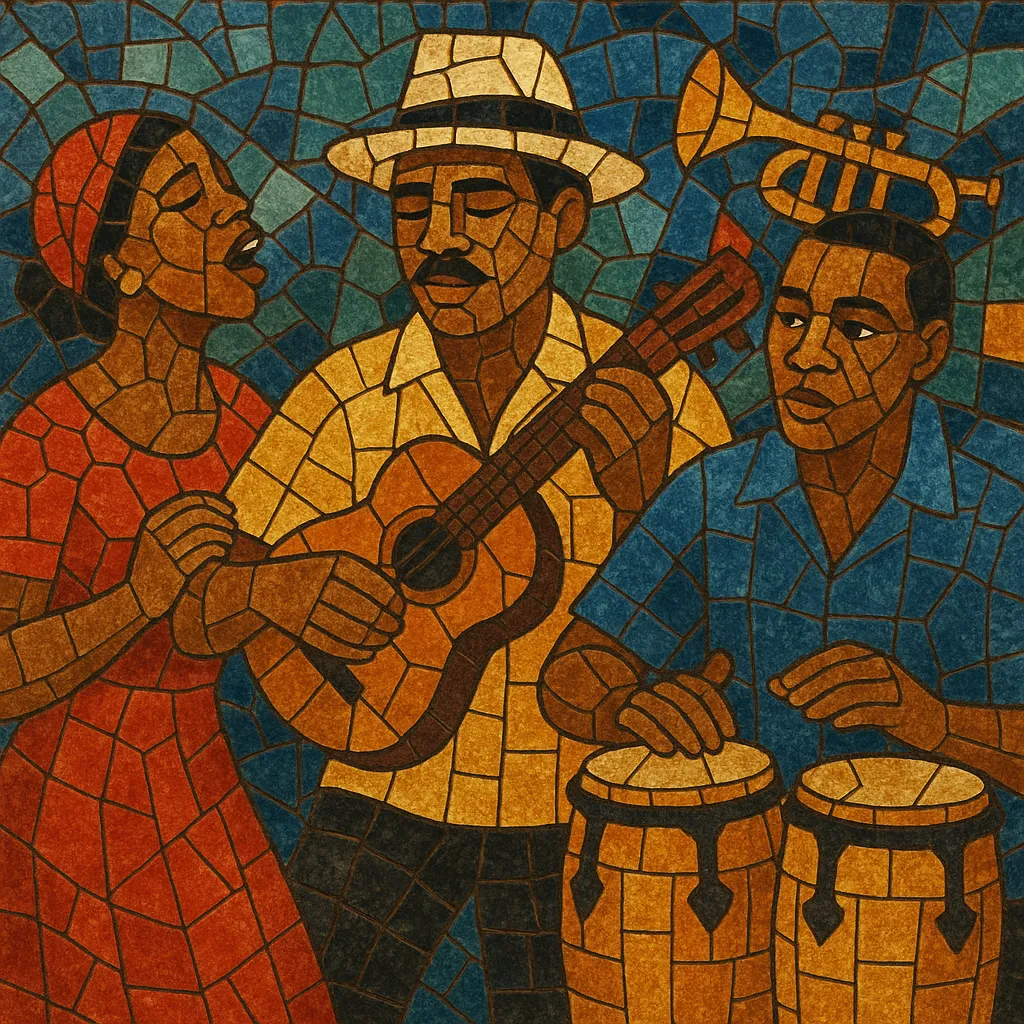Son montuno is a seminal variant of Cuban son distinguished by its extended montuno section: a vamp-based, call-and-response passage that spotlights coro–pregón vocals, cyclical piano or tres guajeos, and a propulsive rhythm section centered on the son clave.
Compared with earlier septeto son, son montuno adopts a fuller conjunto format (trumpets, piano, conga added to bongó, maracas, claves, bass, and tres), thicker horn riffs, and more syncopated tumbaos. It balances a lyrical, narrative verse (canto or verso) with a highly danceable, improvisatory montuno, making it the bridge between rural son traditions and later big-band and urban Afro‑Caribbean dance styles.
Son montuno grows out of son cubano’s Oriente roots, whose ensembles (tres, guitar, maracas, bongó, claves, bass) merged Hispanic song forms with Afro‑Cuban rhythmic practice. By the late 1920s–1930s in Havana, septetos added the trumpet and codified the alternating song–montuno form; the term “montuno” referred both to the vamp-based section and a more rural flavor.
Arsenio Rodríguez and his conjunto modernized son into son montuno proper: adding conga (tumbadora), multiple trumpets, piano, and arranging “mambo” horn passages inside the montuno. He deepened Afro‑Cuban rhythmic language (bongó to cowbell in the montuno, funkier bass tumbaos, more complex tres/piano guajeos) while keeping narrative verses. This format became the template for dance bands across Cuba.
Cuban conjuntos, radio, and recordings spread the style across the Caribbean and the Americas. Musicians in New York and elsewhere adopted the son montuno engine (clave logic, tumbaos, coro–pregón, horn mambos) in descarga jam sessions and big-band contexts, directly informing mambo, Latin jazz, and, later, salsa and its tougher strain, salsa dura.
While Cuban popular music diversified into songo and timba, son montuno remained a foundational language for improvisers, dancers, and traditionalists. Revivalist groups and global projects (e.g., the Buena Vista generation) kept the style in the spotlight, and its arranging concepts continue to underpin contemporary Afro‑Caribbean dance music.


